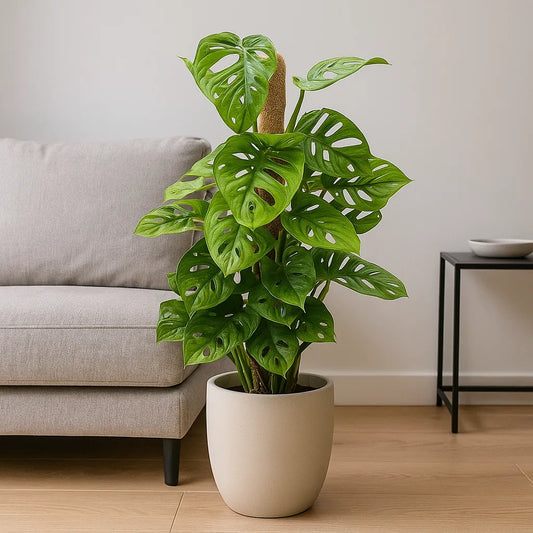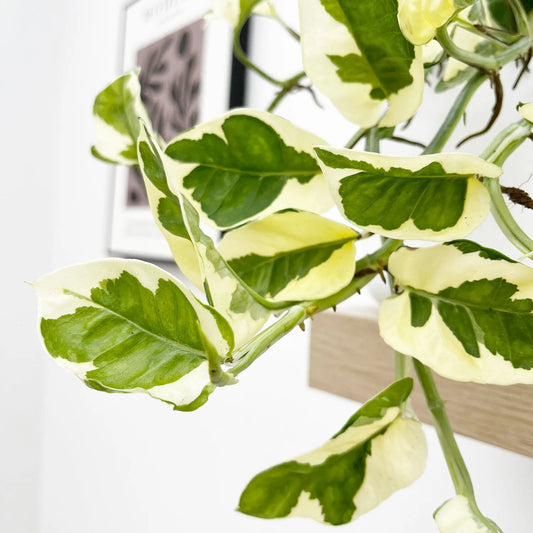Why do houseplants die? Common causes
One of the most common complaints we hear from many people is that they struggle to keep their house plants alive. There are a number of reasons why house plants may fail to thrive within your home but most of them are easily fixed by having the right knowledge about the conditions needed to help them stay alive.
There are many common causes for house plants dying so we’ve compiled a list of the causes, what to look out for and how to fix the problem.
Improper watering
You might think that not watering house plants enough is the reason they die. While this is true, you might be surprised to hear that overwatering can be just as common, if not more common.
How do you know if you’re overwatering house plants?
The most common signs that your overwatering a plant include:
- Yellow leaves
- Moist soil
- Fungus at the base of the plant
- Rotted roots
Nearly all house plants thrive best when the soil is left to dry in between watering. When watering, always water it until the water begins to drip through the pot’s drainage holes and let it drain completely before returning to plant to it’s drainage saucer or larger pot.
Never allow your house plants to stand in water and only water again once the top inch of soil feels dry.
If you overwater house plants or leave them in water, your plants will suffer from root rot. This can occur under the soil so the plant can appear healthy for a while. If you suspect your plant is suffering from being overwatered, take the plant out of the pot and have a look at the roots. Healthy roots are firm and pliable but rotted roots will be mushy.
How do I know if I’m under watering my house plants?
It can be easy to forget to water your plants for a few weeks but, if you do, it could be the reason your house plant is struggling to thrive or dying.
Common signs of under watering include:
- Wilting leaves
- Dry soil
- Yellowed or curled leaves
To make sure your plants get enough water, saturate the soil until it’s evenly moist and wait until it’s dry again before the next watering.
Too much or too little light
Too much direct sunlight or low light conditions can cause house plants to die. The amount or type of light house plants need varies depending on the species. Finding out whether they like full sun, partial sun or low light when you buy them will help you to understand which plants might be more likely to thrive in different places around your home.
Lanky, floppy or pale leaves, as well as shedding leaves, can be a sign that your plant is not getting enough light. You might also find that any new growth is pale and flimsy because the plant isn’t getting what it needs to grow properly.
If your plant is exposed to sunlight for too long or to the hot midday sun, it can cause the leaves to become scorched and yellow and you will find that they suffer and fail to thrive as a result.
Incorrect pot size
As plants grow, so do their roots. So, when they become pot bound or too large, growth will slow down and the growing medium will dry out much more quickly. You might also see the roots starting to grow through the drainage holes of your pot - this is the biggest indication that your plant has outgrown it’s pot.
When you see these signs, you’ll need to repot the plant in a larger pot. But be careful not to go more than one or two sizes bigger! The best time to repot your house plants is during their active growing period such as during the spring and summer.
Draughts and cold air
While most plants need to be near a window, you should avoid placing them directly on a windowsill. They will love being there in the winter, when the light levels are low and they need all they can get but, at night, the temperature on a windowsill can drop dramatically. You should never leave your plants between a curtain and the window on cold nights.
Always avoid placing your house plants near air conditioners, draughty areas or in a direct line between a door and a window. Changes in the temperature can prevent your plant from thriving.
Lack of humidity
Most house plants are originally grown in tropical climates which means they’re used to environments with high humidity. In the UK, our homes can become extremely dry, especially in the winter when the central heating is on constantly but this dry air can be detrimental to the growth of most house plants.
When the air is dry, plants lose moisture which can cause curled leaves and dry leaf tips. These signs can be similar to those shown when the plant does not get enough water.











Leave a comment
Please note, comments need to be approved before they are published.